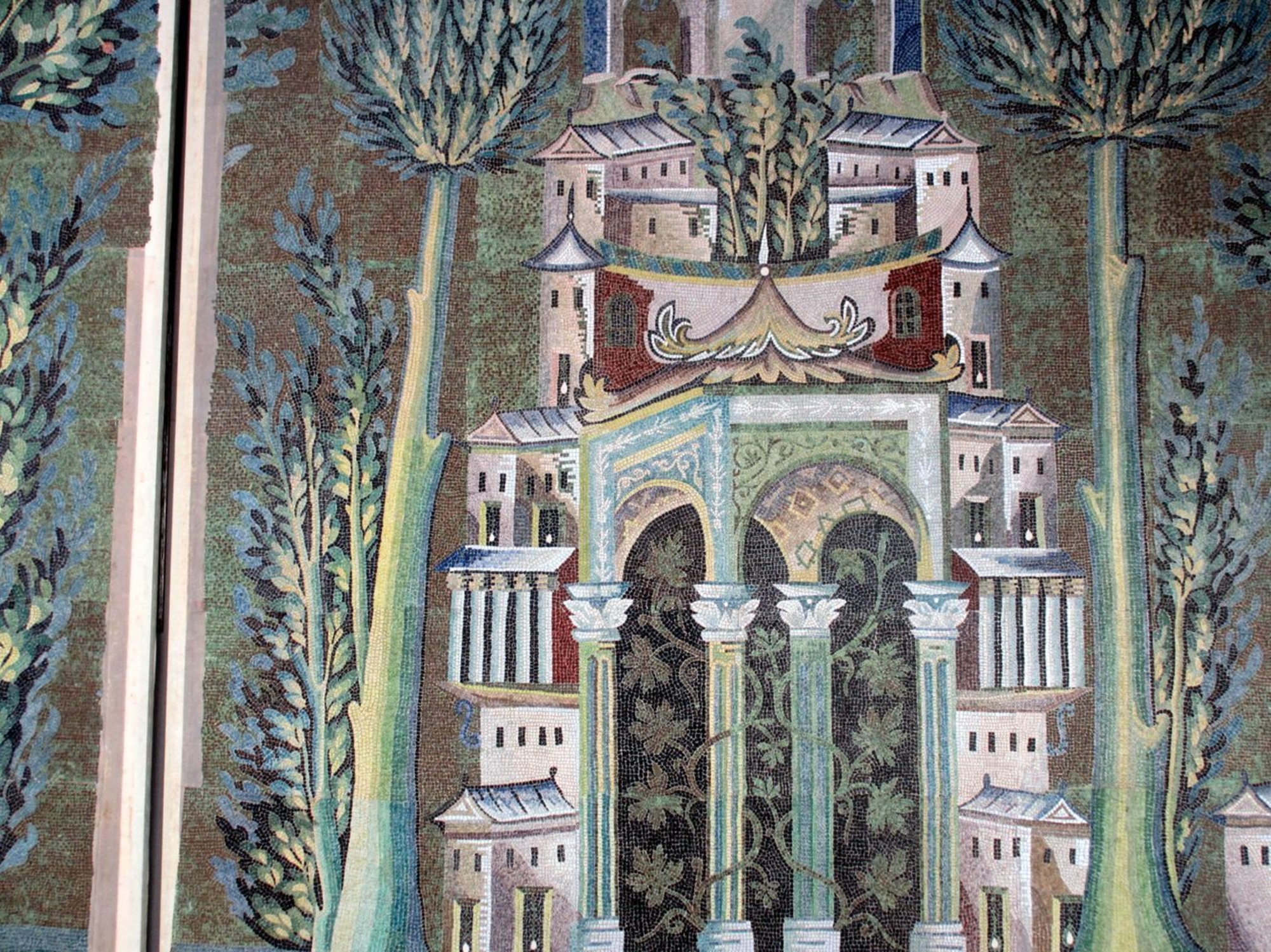- Home
- The mosaic decoration
- A treasure hidden beneath the plaster
The great mosque was ravaged by fire in 1893. Over the next three decades, it was restored by specialists including Victor Eustache de Lorey, director of the Institut français in Damascus, who began renovating the plasterwork in 1928. During these works, he uncovered a large and previously hidden mosaic decoration. It had probably been plastered over by the Ottomans (1517-1922), possibly in the 18th century.
Before the fire of 1893
Victor Eustache de Lorey's discovery made such an impact he is often referred to as the inventor of the mosaics in the great mosque of Damascus. Not all the mosaics were hidden under plaster, however. Fragments survived in places, including a fine ensemble above the entrance to the prayer hall. They appear in the stories, drawings and photographs of Eastern and European travellers over a long period. It was initially thought that this was all that remained of the Umayyad decoration.
“All the walls of the church [the prayer hall] and of the porticos within the court, were adorned on the outside, over the arches, with mosaic work, of which there are great remains.” – Richard Pococke, first half of the 18th century.
Gradual rediscovery
Though Max Van Berchem made the initial study of the visible fragments in 1894, Archibald Campbell Dickie was the first to suggest other mosaics had survived beneath the plaster in 1896. Marguerite Van Berchem, the first art historian to take an interest in Umayyad mosaics, studied the remains of the Umayyad great mosque in detail. In March 1927, she confirmed Dickie's theory. This work formed the basis of the restoration begun by Victor Eustache de Lorey, who was concerned by the state of the building. While Victor Eustache de Lorey ordered and supervised the removal of the plaster, Marguerite Van Berchem’s preliminary study played a pivotal role in this major discovery.
